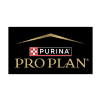Tailoring Pet Nutrition: understanding individual needs and preferences
Whether you consider yourself a pet owner, a ‘guardian’, or even a ‘pet parent’, there’s no doubt that having a furry family member comes with a big responsibility. One of the biggest decisions a pet parent has to make is their pet’s nutrition. After all, it’s a decision you and your pet will live by – day in, day out.

Nutrients in food form the building blocks of our pet’s body, and impact everything from their skin to joint health, digestion, and overall wellbeing. In this article, we’re going to briefly cover the nutritional requirements of pets and how to choose a good pet food to maximise the well-being of your furry friend.
Nutritional Requirements of Pets
Your pet’s body will break down their food into its nutritional building blocks, and the nutrients your pet needs differ between dogs and cats, and change as your pet ages. Broadly speaking, our furry companions need a certain number of calories each day, which come from fats, proteins, and carbohydrates in their diet. They’ll need a complete pet food such as PRO PLAN, which contains vital elements such as:
- Amino acids (found in proteins). 10 of these amino acids are essential, meaning dogs and cats can’t make them themselves, and so need them provided in their diet.
- Fats, and fatty acids. These are important for providing fat-soluble vitamins as well as building blocks for cells and messengers in the body. In cats, up to 50% of the calories in the diet can come from fats.
- Vitamins. Dogs and cats need a range of vitamins. We often think ‘more is better’, but too much of these vitamins can also cause health problems in our pets.
- Minerals. Cats and dogs also need essential minerals like calcium, phosphorus, copper and zinc. Diets too high or low in minerals can cause health problems.
Choosing the Right Pet Food
So, choosing a pet food is a big decision. When choosing diets, pet parents should look for:
- Something that’s labelled as complete and balanced for the age of your pet.
- Brands who invest in research, whose diets are science backed and have experts in veterinary nutrition to formulate their products.
- Quality-control measures, such as checking the product meets the guaranteed analysis that’s stated on the label.
Once you’ve chosen a pet food, it’s time to move your pet onto it. Transition slowly over a seven to 10 days, each day adding more of the new diet and taking away some of the old one.

Common Nutritional Challenges
Modern science has delivered some incredible pet foods with ingredients scientifically proven to help with illnesses and conditions. For example, omega-3s such as DHA and EPA are fantastic for joints and also for skin health, which means a diet like PRO PLAN Everyday Nutrition Dry Dog Food can help support healthy joints and connective tissue.
Similarly, for cats, a whole range of advanced nutrition diets are now available as well. One common problem in cats is a sensitive stomach, a potential solution to promote digestive health is PRO PLAN Delicate Digestion Dry Cat Food. This specially formulated cat food contains high-quality selected protein sources, without wheat, to support food tolerance.
Some diets don’t suit some pets, and you might find you need to make changes for your individual pet. This is more likely as your pet ages, as health conditions can impact their nutritional needs.
Importance of regular veterinary check-ups
Of course, even with good quality food, our pets can sometimes develop health problems, particularly as they age. Regular veterinary check-ups can help to catch problems early, which can make a big difference to your pet’s wellbeing. Contrary to popular opinion, vets know a lot about nutrition and are happy to discuss your pet’s nutritional needs!

Nutritional notes
Looking after your pet’s nutrition is a big responsibility. Whether you have a cat with delicate digestion, or a dog with a super active lifestyle, you want to make sure you’re giving them the best nutrition possible proportional to their needs. PRO PLAN nutritionists and expert veterinarians apply leading-edge science to develop their most advanced and effective combinations of nutrients for your pet. Such as:
Pro Plan nutritionists and expert veterinarians apply leading-edge science to develop their most advanced and effective combinations of nutrients for your pet. Such as:
PRO PLAN Medium Everyday Nutrition Chicken Dry Dog Food
- Superior nutrient absorption
- Helps supports healthy joints
- Formulated for total dental care
- Science based nutrition with no added colourants
- Helps to keep your dog’s coat beautifully shiny
PRO PLAN Delicate Digestion Turkey Dry Cat Food
- Complete pet food for adult cats with sensitive digestion or fussy appetites
- Promotes cats’ digestive health
- Formulated with high quality protein sources, without any wheat to help support food tolerance
- Highly palatable recipe that can satisfy even the fussiest cats
- Turkey n°1 ingredient




Bookmark popover
Removed from bookmarks